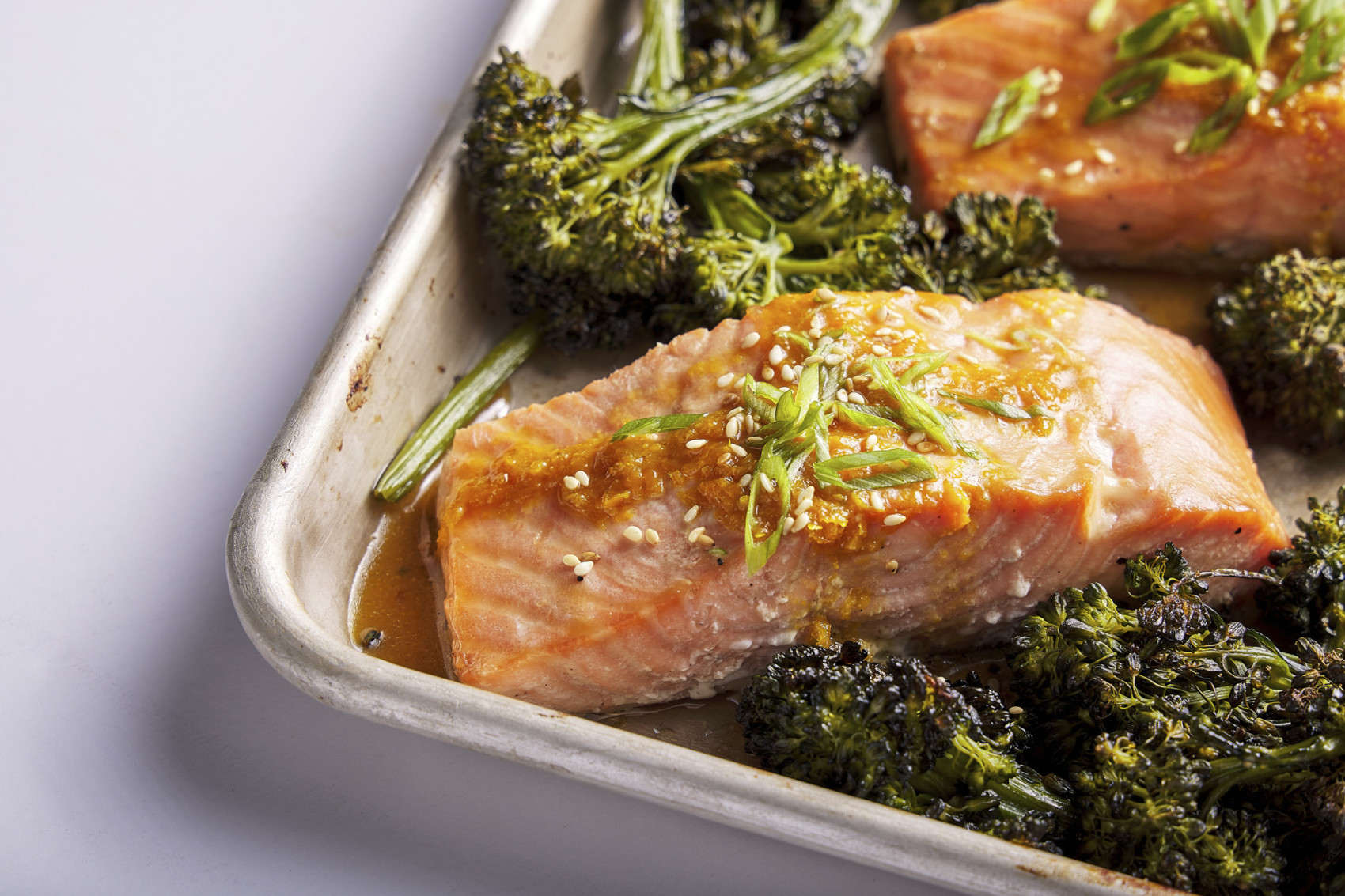Soy sauce, or shoyu, is a staple in Japanese cuisine, known for its rich, savory flavor and umami that elevates everything from sushi to stir-fries, soups, and marinades. Produced by fermenting soybeans, wheat, and salt, it brings complexity and harmony to both traditional and modern Japanese dishes.
However, some may look for soy sauce substitutes due to soy or gluten allergies, sodium restrictions, or simply the desire to try new flavors. Whether for health reasons or culinary exploration, there are several excellent alternatives that can deliver the umami and depth associated with soy sauce without sacrificing taste.
In this article, we will look briefly at the different types of soy sauce, comparing their uses, flavor intensity, sweetness, saltiness, and umami level, and reasons why you might want to try alternatives to soy sauce. We will then consider what products might make good substitutes for each type and introduce some products you might be interested in purchasing.
Traditional Soy Sauce
In this section, we shall introduce the main types of shoyu that are popular in Japan.
Koikuchi Shoyu (Dark Soy Sauce)
Koikuchi shoyu dominates the market, holding around 80% of the total share. Originating in the Kanto region, koikuchi shoyu is known for its bold flavor, deep umami, and rich aroma, making it a versatile choice for a wide range of culinary uses. Unlike lighter varieties, its dark color enhances not only the taste of dishes but also their visual depth.
Crafted from a balanced mix of soybeans and wheat, it undergoes fermentation to develop its distinctive complex flavor and aroma. With its robust taste, koikuchi shoyu is used in everything from soups and sauces to marinades and stir-fries, adding richness to both traditional Japanese cuisine and contemporary recipes.
Learn more about koikuchi shoyu.
Usukuchi Shoyu (Light Soy Sauce)
Usukuchi shoyu is light in color but not in taste. Recognized for its slightly saltier taste despite its light color, it is a key ingredient in Japanese cooking, and particularly popular in the Kansai region. Despite its pale hue, it brings a bold flavor that enhances dishes without overwhelming them or affecting the color of the ingredients.
Made from a combination of soybeans, wheat, and a hint of amazake (a sweet sake byproduct), it undergoes a unique fermentation process that gives it its characteristic light color and subtle sweetness. Although it holds a smaller share of the national market, at around 10%, compared to kokuchi shoyu, usukuchi shoyu is essential in dishes where preserving the fresh look of ingredients is crucial, such as simmered dishes (nimono) and delicate soups.
Its refined flavor is ideal for the aesthetics of Kansai cuisine, where each ingredient’s natural beauty is emphasized. Usukuchi shoyu’s gentle profile allows it to enhance flavors while keeping dishes visually appealing.
Learn more about usukuchi shoyu.
Tamari Shoyu
Tamari shoyu is a rich, full-bodied soy sauce that typically contains little to no wheat, distinguishing it from other varieties. Originally from Japan’s Chubu region, tamari was first produced as a byproduct of miso-making and is known for its thicker consistency and darker color compared to koikuchi shoyu.
With its intense umami flavor and gluten-free nature, it is popular both in traditional Japanese cooking and among those with gluten sensitivities. Commonly used as a dipping sauce for sashimi or a seasoning in marinades, tamari shoyu adds depth and smooth texture to any dish it complements.
Learn more about tamari shoyu.
Other Minor Varieties
In the “Others” category, saishikomi shoyu (double-brewed soy sauce), shiro shoyu (white soy sauce), and amakuchi shoyu (sweet soy sauce) are unique soy sauce varieties, each with distinctive flavors and uses in Japanese cuisine.
Saishikomi shoyu has a rich, complex flavor and dark hue, achieved by a second brewing process that uses soy sauce as the base instead of salt water, creating a thicker consistency. It’s often used as a finishing sauce for sashimi and high-end dishes where depth and visual appeal are key.
Shiro Shoyu (white soy sauce) stands out for its light color and subtly sweet taste, produced with a higher wheat-to-soy ratio. Its pale hue makes it ideal for dishes that need to preserve ingredient colors, like clear soups and light sauces in Kansai cuisine, where subtlety is valued.
Amakuchi shoyu, a sweet soy sauce popular in Kyushu, balances strong flavors with added sugar for extra sweetness. Its mellow, caramelized taste complements grilled or simmered dishes, enhancing meats and vegetables without overwhelming them.
Comparison Of Different Types
In Japanese soy sauces differ significantly in flavor, sodium content, and taste profiles, making each ideal for specific culinary applications.
Sodium Content: Usukuchi shoyu has the highest sodium content despite its lighter color, making it perfect for adding saltiness without darkening dishes. Shiro shoyu also has relatively high sodium, while koikuchi and tamari shoyu contain moderate levels. Amakuchi shoyu has a lower sodium level, emphasizing sweetness, whereas saishikomi shoyu has a high sodium concentration due to its double-brewing process.
Sweetness: Amakuchi shoyu is the sweetest, adding a caramelized taste that works well in grilled and simmered dishes. Shiro shoyu has a gentle sweetness that complements its light flavor, while koikuchi and tamari shoyu have subtle hints of sweetness. Saishikomi and usukuchi shoyu are low in sweetness, emphasizing saltiness and umami.
Flavor Intensity: Saishikomi shoyu is the most intense, with a rich, layered taste from double-brewing, making it ideal as a finishing sauce. Tamari shoyu is also strong and concentrated, perfect for dipping and sauces. Koikuchi shoyu offers balanced intensity for versatile use, while Usukuchi shoyu is less intense yet notably salty. Shiro and Amakuchi shoyu are mild, adding subtle flavors without overwhelming dishes.
Saltiness: Usukuchi shoyu is the saltiest, enhancing flavor without altering color, popular in Kansai cooking. Saishikomi and shiro shoyu follow with higher salt content, while koikuchi and tamari have moderate salt levels. Amakuchi shoyu is the least salty, focusing more on sweetness.
Umami: Saishikomi shoyu has the richest umami, with complex flavor due to double fermentation. Tamari shoyu also has high umami and thickness, adding savory depth to dishes. Koikuchi shoyu offers a balanced umami profile for versatile cooking, while usukuchi has moderate umami with a saltier edge. Shiro and amakuchi shoyu have lighter umami, favoring more delicate or sweet notes.
Reasons Why You May Wish To Replace Shoyu
People may seek shoyu alternatives for a variety of reasons. For one, traditional soy sauces are high in sodium, which can be a concern for those managing blood pressure or following a low-sodium diet.
Additionally, soy allergies and gluten intolerance (as most shoyu contains wheat) prompt individuals to look for soy- and gluten-free substitutes. Some health-conscious consumers may wish to avoid certain fermentation by products in soy sauce, opting instead for options with cleaner or simpler ingredients.
Lastly, some people prefer alternative flavors to explore new culinary profiles or to meet specific dietary preferences, like low-carb or vegan diets, while still enjoying the umami depth that soy sauce provides.
Soy Sauce Substitutes
For individuals seeking alternatives to soy sauce, various options cater to dietary restrictions, flavor preferences, and health goals, such as reducing sodium intake or avoiding allergens like soy and gluten.
Here are some of the most popular substitutes and the reasons they may be suitable.
1. Coconut Aminos
Coconut aminos offers a soy- and gluten-free option made from fermented coconut sap and sea salt. With a mild, slightly sweet flavor, it has significantly less sodium than traditional soy sauce, making it ideal for those watching their sodium intake or dealing with soy allergies and gluten intolerance.
2. Liquid Aminos
Liquid Aminos, derived from soy or coconut, are unfermented and offer a similar umami taste to soy sauce without fermentation byproducts. This option is also gluten-free, and low-sodium versions are available, making it suitable for individuals on low-sodium diets or those avoiding fermented foods.
3. Fish Sauce
Fish Sauce provides a strong umami flavor and works well as a soy-free alternative. Though high in sodium, only a small amount is needed, making it a popular choice for low-carb or ketogenic diets. However, fish sauce is not suitable for individuals avoiding animal products.
4. Miso Paste
Miso paste, while not a liquid, can be mixed with water to mimic soy sauce’s savory, umami flavor. Many miso options are gluten-free, though they contain soy, making them unsuitable for soy-allergic individuals. Low-sodium miso is also available, making this a flexible option for some.
5. Ponzu Sauce
Ponzu Sauce combines citrus with soy sauce for a lighter, tangy flavor. Though traditionally containing soy and gluten, there are soy- and gluten-free versions available, appealing to those looking for a refreshing flavor twist in salads or marinades. Try this organic version.
6. Oyster Sauce
Oyster Sauce is another soy-free option known for its thick, savory-sweet flavor. Although not vegan and sometimes containing gluten, it offers a concentrated taste that works well in stir-fries and marinades. Its high sodium level means it’s best used sparingly. Oyster sauce, like Ponzu sauce is normally more useful as an alternative for those seeking a slightly different flavor rather than for dietary reasons.
7. Teriyaki Sauce
Teriyaki sauce is a sweet and savory alternative made from soy sauce, sugar, and mirin, resulting in a thick, glossy consistency with a gentler flavor than pure shoyu. Though it often contains soy, its sweetness works well for dishes where a caramelized, rich taste is desired, like grilled meats and vegetables.
8. Worcestershire Sauce
Worcestershire sauce provides a tangy, complex flavor from ingredients such as vinegar, molasses, and spices. With its bold, savory taste, it delivers an umami depth similar to shoyu without containing soy and is typically gluten-free. It's a popular addition to marinades, stews, and sauces, bringing depth and a subtle hint of spice.
9. Kushikatsu Sauce
Kushikatsu sauce is a Japanese dipping sauce with a sweet and tangy profile, similar to tonkatsu sauce, typically enjoyed with fried foods. Though it is soy-based, its thick texture and unique mix of fruits, spices, and vegetables make it a suitable alternative for adding a mildly sweet, less salty flavor to dishes.
10. Gluten-Free & Soy-Free Options
In addition to the above, tamari, which we have covered as a soy sauce variant, is often made without wheat, and many versions are gluten-free. It retains the rich umami flavor typical of soy sauce, making it a good choice for those with gluten sensitivity.
Additionally, it tends to be lower in sodium than traditional soy sauce, suiting health-conscious consumers. You may also be interested in this miso tamari seasoning.
Lastly, if you are looking to avoid allergens but don’t want to compromise on the taste of shoyu, this soy-free shoyu, made from broad beans, may be a great choice.
No Soy, No Problem
Shoyu is a staple in Japanese cuisine, bringing a deep umami flavor that elevates a wide range of dishes. However, dietary restrictions, allergies, or the urge to explore new tastes may lead individuals to seek out substitutes.
Each substitute offers unique qualities to meet different needs.
- Coconut aminos and liquid aminos are ideal for those who need to manage sodium levels or avoid soy and gluten.
- Fish sauce and miso paste deliver strong umami flavors, while mushroom-based sauces provide a natural and allergen-friendly option.
- For those seeking a sweeter or tangier taste, teriyaki, oyster, and Ponzu sauces expand culinary possibilities.
- Worcestershire and kushikatsu sauces add further diversity to flavor profiles, making them valuable additions to marinades and stir-fries.
Knowing these alternatives enables creativity and flexibility in cooking, allowing everyone to enjoy the complexity and harmony that soy sauce brings to dishes.
What sauce do you find makes the best substitute for soy sauce? Let us know what you think in the comments.


























 English (US) ·
English (US) ·